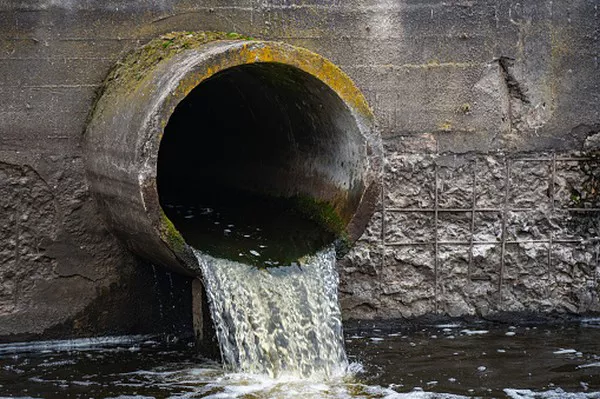Sewage treatment is a crucial process that ensures the safe disposal of wastewater while simultaneously minimizing its environmental impact. One essential aspect of sewage treatment is the digestion of sewage sludge, a byproduct of wastewater treatment. This process plays a pivotal role in reducing the volume of sludge, stabilizing its organic content, and making it suitable for safe disposal or beneficial reuse. In this article, we will delve into the various types of sewage sludge digestion, focusing on anaerobic digestion and aerobic digestion, and the benefits and drawbacks of each.
The Importance of Sewage Sludge Digestion
Sewage sludge, often referred to as biosolids, is the solid residue generated during the wastewater treatment process. It contains organic matter, nutrients, and microorganisms, which can be problematic if not adequately managed. To mitigate these issues, sewage sludge must undergo digestion, a process that reduces its volume, destroys pathogens, stabilizes its organic content, and releases valuable resources like biogas.
Types of Sewage Sludge Digestion
Anaerobic Digestion:
Anaerobic digestion is a biological process that takes place in the absence of oxygen. In this method, sewage sludge is placed in a closed tank or digester, where microorganisms break down the organic matter, converting it into biogas, a mixture of methane and carbon dioxide. This biogas can be used as an energy source, reducing the reliance on fossil fuels. Anaerobic digestion also results in a stabilized sludge that is less odorous and hazardous.
The process involves four main stages: hydrolysis, acidogenesis, acetogenesis, and methanogenesis. Each stage is carried out by specific groups of microorganisms that work together to break down the complex organic compounds present in sewage sludge.
Anaerobic digestion has several advantages, such as the production of renewable energy, reduction of sludge volume, and pathogen destruction. However, it requires careful monitoring and control to maintain optimal conditions for microorganism activity and gas production.
Aerobic Digestion:
In contrast to anaerobic digestion, aerobic digestion relies on the presence of oxygen. During this process, sewage sludge is exposed to oxygen and mixed regularly to promote the growth of aerobic microorganisms, which break down the organic matter into carbon dioxide, water, and biomass. The heat generated during aerobic digestion can help reduce pathogens and stabilize the sludge.
Aerobic digestion is advantageous in terms of odor control and the reduction of volatile organic compounds (VOCs) that can be emitted during anaerobic digestion. It is a faster process than anaerobic digestion but may not produce biogas.
Benefits of Sewage Sludge Digestion
Volume Reduction:
Digesting sewage sludge significantly reduces its volume. This is particularly important for waste management, as it minimizes the need for storage and disposal space.
Pathogen Reduction:
Both anaerobic and aerobic digestion processes effectively destroy harmful pathogens in sewage sludge, ensuring that the resulting biosolids are safe for handling and use.
Energy Production:
Anaerobic digestion produces biogas, a valuable renewable energy source. The methane-rich biogas can be used to generate electricity and heat, reducing the carbon footprint of wastewater treatment plants.
Nutrient Recovery:
The digested sludge, or biosolids, is rich in essential nutrients such as nitrogen and phosphorus. These nutrients can be recovered and used as fertilizers, reducing the need for chemical fertilizers and promoting sustainable agriculture.
Reduced Odor Emissions:
Aerobic digestion helps control odor emissions more effectively than anaerobic digestion, making it a preferable option in areas where odor control is a concern.
Drawbacks of Sewage Sludge Digestion
Energy Costs:
The operation of digestion systems, particularly anaerobic digestion, requires energy inputs for heating, mixing, and maintenance. This can be costly and may offset the benefits of biogas production.
Nutrient Imbalance:
While nutrient recovery is a benefit of sewage sludge digestion, there is the potential for imbalances in nutrient ratios, which may require additional processing to achieve suitable fertilizer products.
Complexity:
Both anaerobic and aerobic digestion processes can be complex and require careful management to maintain optimal conditions for microorganism activity.
Greenhouse Gas Emissions:
Although anaerobic digestion produces biogas, it also releases carbon dioxide during the process. The net impact on greenhouse gas emissions depends on the handling and utilization of the biogas.
Conclusion
Sewage sludge digestion is an essential component of modern wastewater treatment, playing a crucial role in reducing the environmental impact of sewage sludge while recovering valuable resources. The choice between anaerobic and aerobic digestion depends on various factors, including the desired end products, available resources, and local environmental regulations. Anaerobic digestion is favored for its biogas production and pathogen destruction, while aerobic digestion excels in odor control and rapid processing.
As wastewater treatment facilities continue to evolve and adopt more sustainable practices, the digestion of sewage sludge will remain a key focus. Advancements in technology and processes are continually improving the efficiency and sustainability of sewage sludge digestion, making it an increasingly important tool in the quest for cleaner and more resource-efficient wastewater treatment.
By understanding the advantages and drawbacks of both anaerobic and aerobic digestion methods, wastewater treatment plants can make informed decisions to maximize the benefits of sewage sludge digestion while minimizing its environmental impact. In doing so, we move one step closer to achieving a more sustainable and environmentally responsible approach to sewage treatment.

